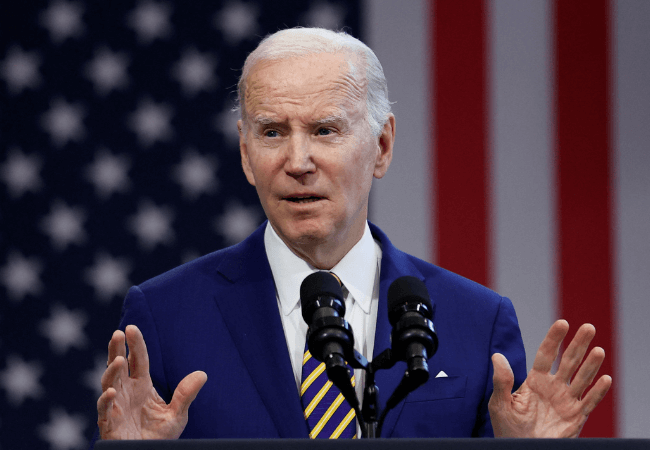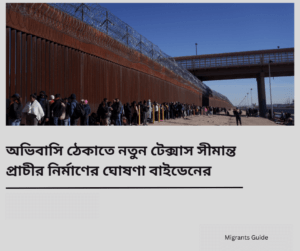Policy Details and Exceptions
Under the new policy, migrants caught crossing unlawfully will face immediate deportation or be sent back to Mexico. Exceptions include unaccompanied minors, individuals with severe medical or safety concerns, and victims of trafficking, as stated by the Department of Homeland Security. This ban aims to curb illegal immigration and manage the border more effectively.
During a White House briefing, Biden emphasized that asylum seekers still have legal pathways, such as using the CBP One app for appointments. “This measure will help us control our border and bring order to the system,” Biden asserted. The ban will remain until the number of illegal entries is reduced to manageable levels.
Political Context and Reactions
Biden’s administration, dealing with a surge in illegal crossings, has taken a tougher stance on border security. This comes as he prepares to face Republican candidate Donald Trump in the upcoming election. Trump, known for his stringent immigration policies, has promised further crackdowns if re-elected.
Since assuming office in 2021, Biden aimed to reverse some of Trump’s restrictive measures but faced record numbers of illegal crossings, straining border resources and local communities. Despite the new restrictions, Biden criticized Trump’s controversial policies, such as family separations and derogatory remarks about immigrants. “I will never demonize immigrants,” Biden affirmed.
Polling indicates that voters prefer Trump over Biden on immigration by a 17-point margin, highlighting the political stakes.
Operational Details and Challenges
The ban activates when border arrests average over 2,500 daily, a threshold currently exceeded. Recent data shows 4,300 daily arrests in April. The policy will pause if arrests drop below 1,500 daily for three weeks, a level last seen in mid-2020 during the COVID-19 pandemic.
Key operational questions remain, such as deporting migrants from distant countries and Mexico’s capacity to accept non-Mexican migrants. The policy mirrors Trump-era tactics, utilizing a legal framework previously employed for travel bans.
Criticism comes from both sides of the political spectrum. The American Civil Liberties Union plans to challenge the new restrictions, accusing Biden of backtracking on U.S. asylum commitments. Meanwhile, Trump’s campaign argues that exemptions for minors could spur trafficking, while Republicans label the policy as insufficient and politically driven.
Legislative and International Responses
Biden’s efforts to pass a bipartisan Senate bill for enhanced border security have stalled, partly due to opposition from Trump. Nonetheless, Biden has introduced various measures over the past year to tighten asylum procedures, including a stricter initial asylum claim standard in May 2023.
Recent months have seen a decrease in illegal crossings, attributed partly to increased Mexican enforcement. Mexico’s incoming president, Claudia Sheinbaum, faces pressure to maintain low crossing rates. Current President Andres Manuel Lopez Obrador affirmed ongoing cooperation with Biden during a recent call.
Impact on Migrants and Border Communities
Enrique Lucero, Tijuana’s migrant affairs director, warned that the new policy might overwhelm shelters and leave many migrants vulnerable. “Where will all these people go?” Lucero asked, predicting that many will end up on the streets or fall prey to traffickers.
A Colombian asylum seeker, who identified as John, shared his costly and arduous journey to the U.S., expressing relief at avoiding deportation. “It would have been very painful to start over in debt,” he said. John spent eight days and 20 million Colombian pesos ($5,200) to cross into the U.S. and seek asylum. His immigration court hearing is scheduled for April 25.
At MigrantsGuide, we recognize the profound impact of such policy changes on migrants and border communities. The new asylum ban is expected to challenge both U.S. border authorities and local shelters in Mexico, prompting concerns about the humanitarian and logistical repercussions. As this situation evolves, we remain committed to providing timely and comprehensive updates, offering a vital resource for those affected and those seeking to understand the complex landscape of immigration policy.
For more detailed coverage and analysis of immigration policies, visit MigrantsGuide.com.



